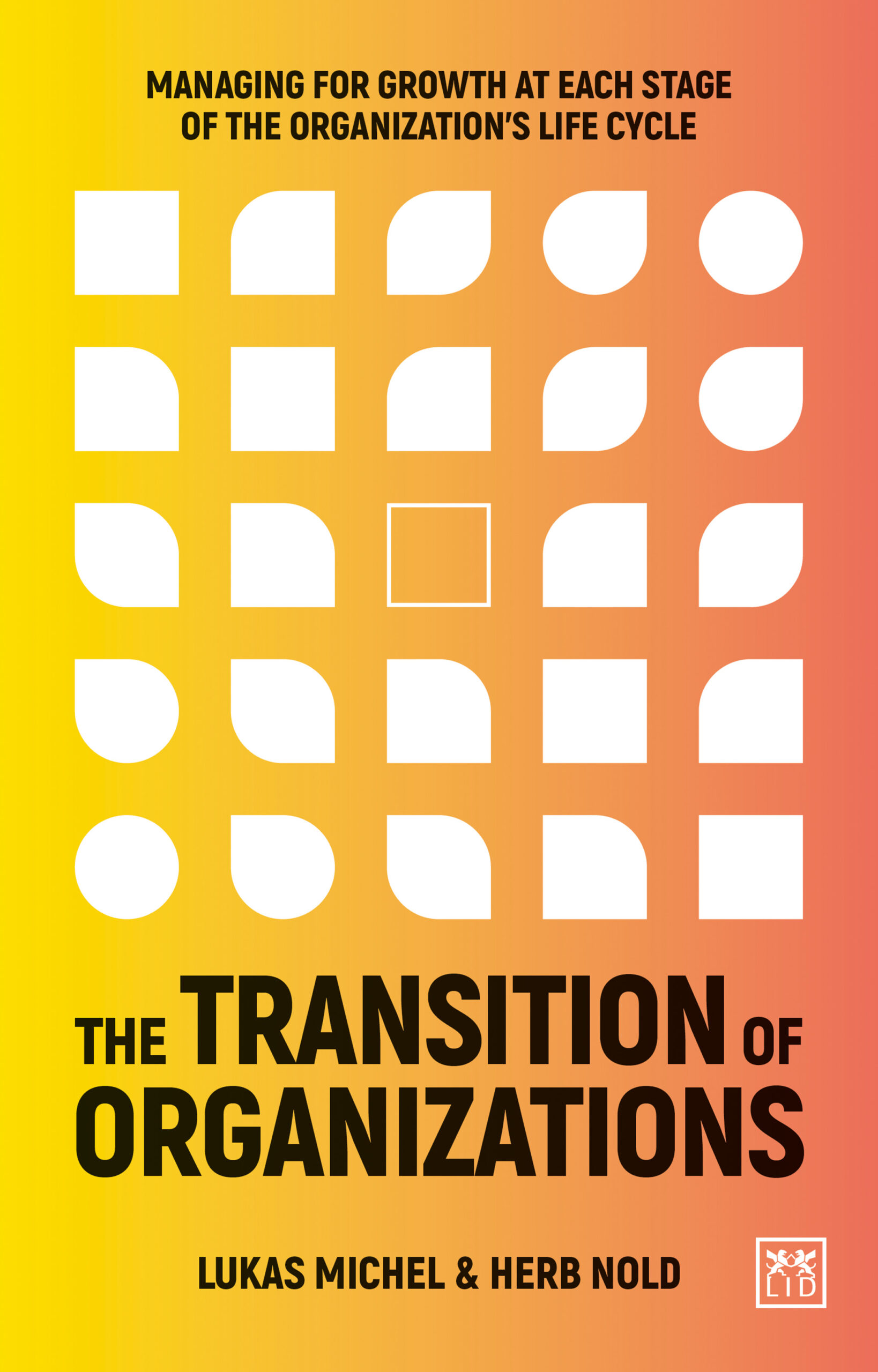|
Three Steps for Successful Transition of Organizations with Lukas Michel & Herb Nold
Three Steps for Successful Transition of Organizations

By Guest Contributors Lukas Michel & Herb Nold
Authors of The Transition of Organizations, Lukas Michel and Herb Nold, share three steps to help you transition into a new growth stage more easily.
Managing Transitions. Organizational growth, as outlined by Greiner, follows five stages. Four transitions, from one stage to the next, build the structures, capabilities and systems needed to navigate through the life cycle. Managing these transitions becomes every manager’s job, with mastery of better management principles as the target. By managing these transitions effectively, organizations can convert their management from a necessary burden into a competitive advantage.
Diagnostic mentoring creates the learning experience needed to successfully transform the organization using better management practices. Awareness, insights, and learning guide your journey, with proven tools to engage the entire team.
Step 1: Raise awareness for the transition. Diagnostics using proven tools establish quantifiable observation points. Monitoring is a discipline that can be used to observe the current state and alter design for an improved future state. By observing (scanning) capabilities, potential faults and malfunctions that are typically overlooked can be spotted at an early stage. By becoming aware of critical but unseen signals, potentially beneficial design requirements can be identified. In this way, leaders can decide whether to address issues by taking targeted action. As such, monitoring initiates design changes to improve capabilities.
The Executive Survey. Capability monitoring with a professional, research-based survey tool creates awareness and the necessary insights for managers to develop people-centric, agile, and dynamic capabilities. The Executive Survey is an online questionnaire for managers and employees that takes less than a half-hour to complete. The results of the survey are documented in the Organization Twin. Conducting the assessment creates awareness and establishes a shared understanding of the context and the issues that require attention. Participating in the survey is a first intervention.
Step 2: Act on your insights on your transition. The Organization Twin distils the elements of better management into practical components. The application of agile principles, people-centric management, dynamic capabilities, and organizational design is selective. The decision to employ a specific design excludes other alternatives. The design process is about the selection of managerial tools, routines and rules that make for mastery in the unique context of the organization. Effective organizational design requires objective reflection and personal interactions. It is not free from internal politics, but enlightened leaders will make every effort to remain objective and minimize political infighting for the good of the organization. The setting and tone of these conversations determines much about the design’s quality.
The Organization Twin. Organizations create intangible assets–one cannot see and, therefore, not advance them. That’s why we build twins: Visible dynamic copies of real-world organizations. With them, leaders can view present conditions, anticipate opportunities, plan changes, test decisions, and transfer that experience into the real world. Objective reflection and dialogue about the results among executives triggers the thinking about how we do things here and what mastery in management looks like. Therefore, engaging people in the Organization Twin, and the following steps, means using the knowledge and brainpower throughout the organization to work on the system.
Step 3: Expedite the learning about your transition: The inner game describes the techniques for continuous learning. Monitoring assumes that the design can be changed and not frozen in place. While deeply embedded in organizational practices and rooted in the past, managerial design and capabilities can be changed through interventions. The shift to better management demands specific capability development projects that advance the decisions on what needs to be changed. In this way, the idea of permanent change is replaced by the notion of combining learning and doing into an iterative process of continuous improvement.
Work in the system. Mastering the transition to generate continued growth is to work in the system. With the people in mind, managers now can apply the four principles of working in the system as a roadmap to continue making transitions to higher levels with their team. Managing continuing transitions follows principles of work in the system – the foundation of digital leadership:
- Know with Clarity: raise awareness. Help people find purpose. They know that motivation stems from self-responsibility. Shared sense of purpose replaces material incentives. All leaders need to do for people is help them make sense of what truly matters. That is the best way to identify opportunities and deal with the complexity in your business.
- Move in One Direction: enable choice. Relate with people to enhance knowledge. People-centric leaders delegate decisions and relate with people on individual levels to enhance their skills and knowledge. Providing choice and direction become means to bundle the energy and help employees select the right opportunities and move in one direction as their way of dealing with ambiguity.
- Mobilize the Energy: build trust. Facilitate collaboration. People-centric leaders facilitate self-organization based on trust as the means to deal with uncertainty. They mobilize resources in ways that enable collaboration across organizational boundaries, which turns opportunities into value.
- Maintain the Focus: focus attention. Enable learning. People-centric leaders use beliefs and boundaries to keep attention centred on what truly matters. They know that focus enables learning as the means to unlock creativity and stick with chosen opportunities, despite the turbulence of higher volatility.
Applying better management techniques is working in the system. You should expect all your managers to follow these four principles and develop their enabling approach to management, which caters to the people as individuals.
Why guess if you can know? Diagnostic mentoring is the three-step process to help organizations succeed with the life cycle transition. It provides deep insight into unseen and rarely discussed elements of systems, leadership, and culture. Major organizational transformations require leaders at the top to adopt a new mindset that views people as self-responsible. Top executives must recognize that all components of the organization are closely interconnected, in a complex web of dependent relationships. It is the manager’s responsibility to drive the transformation.
————————————————————————————————————————————————
Bibliography: Greiner, L. E. (1998). Evolution and Revolution as Organizations Grow. Harvard Business Review: Mai-June.
ABOUT THE AUTHOR

Suggested Reading
 The Transition of Organizations explores various common patterns of management styles and then offers transition strategies to help managers succeed in the digital economy. The authors guide leaders to prepare for these transitions by laying the foundations or infrastructure needed to prevent a crisis that inhibits further growth. They also provide leaders with a greater understanding of the growth framework, which will help leaders to manage better the development of their companies.
The Transition of Organizations explores various common patterns of management styles and then offers transition strategies to help managers succeed in the digital economy. The authors guide leaders to prepare for these transitions by laying the foundations or infrastructure needed to prevent a crisis that inhibits further growth. They also provide leaders with a greater understanding of the growth framework, which will help leaders to manage better the development of their companies.

